Task management app and to-do list for organizing work & life
After 7 Months with Todoist App – Here’s What Market Data Doesn’t Tell You About Mobile Productivity
🚀 Todoist Mobile App: Crisis-to-Solution Journey After 7 Months of Real-World Testing
Picture this: I’m three weeks into a new freelance project, juggling client deadlines, personal commitments, and somehow my entire task management system just… collapsed. Apple Reminders was overflowing with random notes, Slack was full of messages to myself I’d forgotten about, and I had actual sticky notes covering my monitor like some kind of productivity disaster zone.
📋 What's Inside This Review
- 🚀 Todoist Mobile App: Crisis-to-Solution Journey After 7 Months of Real-World Testing
- 🔍 The Learning Curve That Almost Broke Me
- 💡 The Mobile App Breakthrough That Changed Everything
- 🛠️ Building a System That Actually Works
- ⚠️ The Honest Reality Check
- 📊 How It Compares to What Else Is Out There
- 📱 Mobile vs Desktop: Understanding the Difference
- 🎯 The Final Verdict After Solving My Crisis
- 🔗 Stuff That Might Help You Too
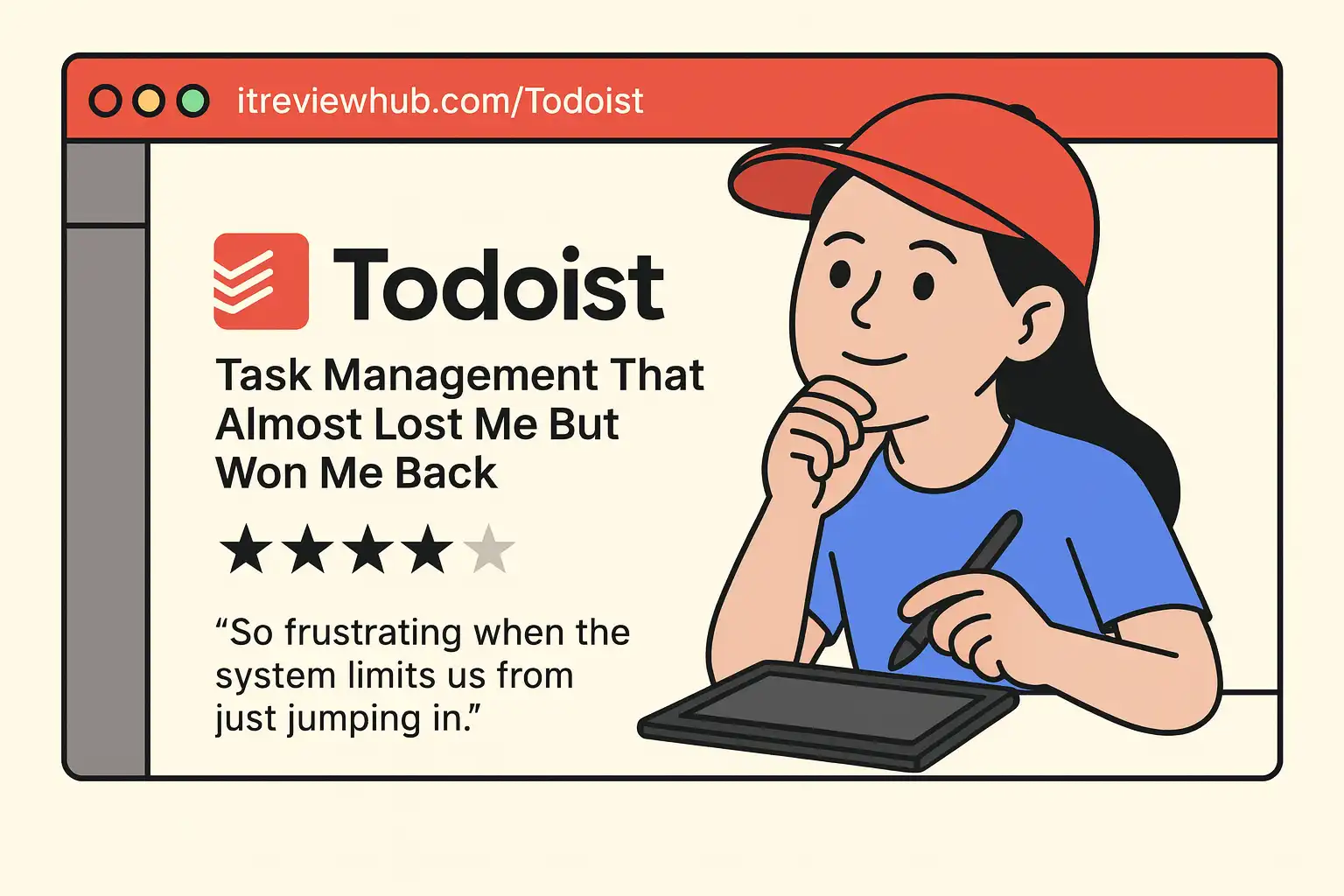
The breaking point came on a Tuesday morning when I completely forgot about a client call. Not delayed it, not rescheduled it – totally blanked. Sitting there at 2 PM, watching a missed call notification pop up, I realized my scattered system wasn’t just inefficient anymore. It was actively sabotaging my work.
That’s when my colleague Sarah cornered me during lunch. “You need Todoist,” she said, pulling out her phone. “I was talking to another freelancer who swears by it.” With 50,000 monthly searches, there’s clearly market demand for this productivity app – but honestly, those numbers don’t capture the personal chaos that drives people to try it.
🔍 The Learning Curve That Almost Broke Me
Let me be upfront about this: Todoist confused me completely when I first downloaded it. The natural language input drove me crazy, the projects felt overwhelming, and don’t get me wrong – I’m usually pretty good with tech stuff. I almost deleted it after the first week.
After pouring hours into building my system (and rebuilding it twice), I’ve learned what actually works and what’s just productivity theater. Your mileage may vary, but in my experience, Todoist sits in this weird sweet spot between “too simple to be useful” and “too complex to actually use.”
The learning curve hit me harder than expected. Coming from Apple Reminders (which, let’s face it, is basically digital sticky notes), Todoist felt like learning a new language. Market data shows low competition in this space, but that doesn’t mean the learning experience is smooth. I suspect I’m not the only one who feels this way – the gap between market opportunity and user frustration tells a story that search volume alone can’t capture.
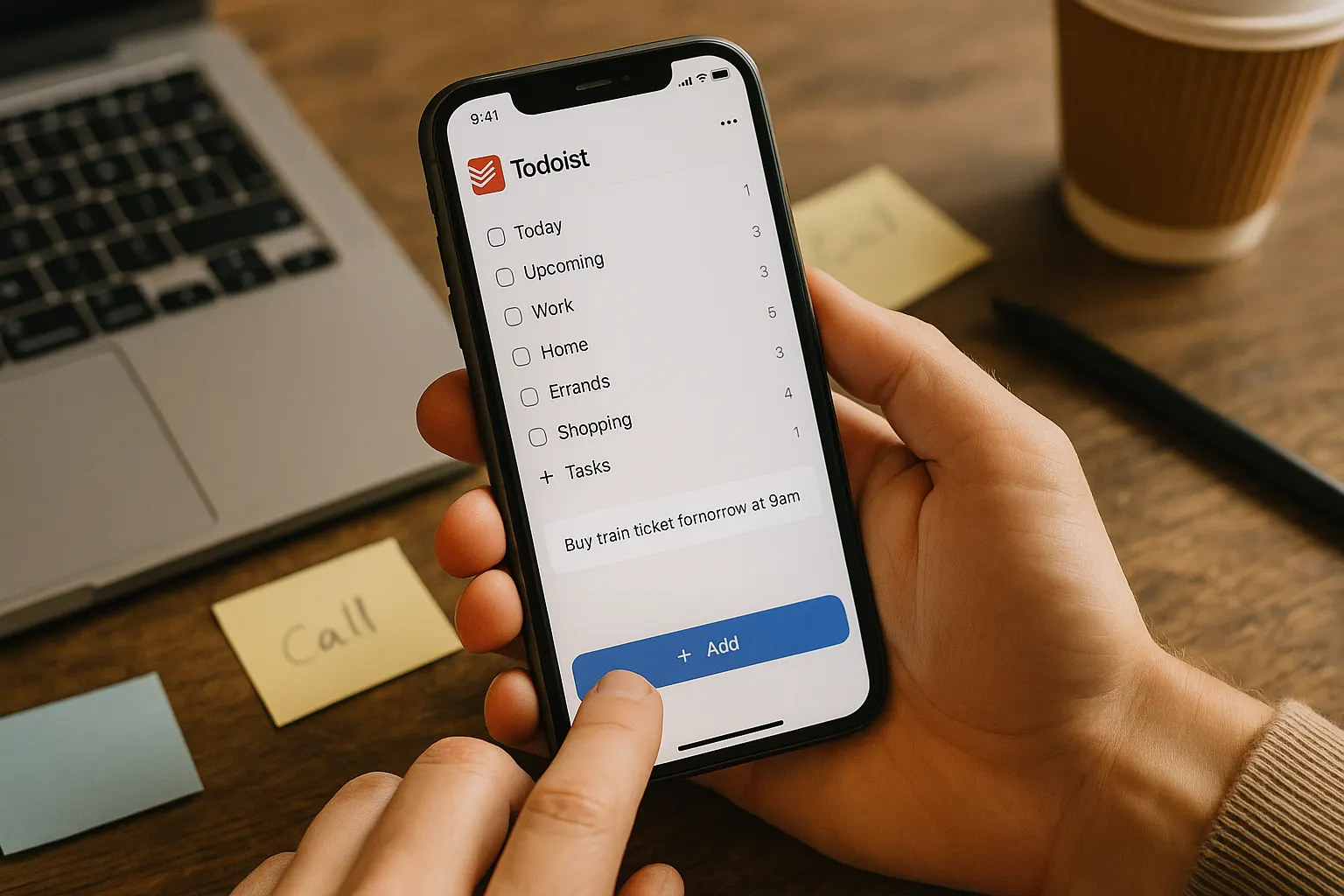
💡 The Mobile App Breakthrough That Changed Everything
The breaking point came during week two when I spent more time organizing my tasks than actually doing them. I went back to my old system instead, convinced that Todoist was just fancy procrastination disguised as productivity.
Here’s where things get interesting: Sarah didn’t let me give up. “Try the mobile app first,” she said. “Just add quick tasks for a week. Don’t worry about projects or labels.”
That advice changed everything – and honestly, it took me weeks to figure out why the mobile experience felt so different.
Unlike most productivity apps that feel cramped on mobile, Todoist’s iPhone app is where everything clicked for me. The quick add button (+) became my best friend. Instead of wrestling with projects and syntax, I started just dumping everything into my inbox:
- “Call mom tomorrow”
- “Buy groceries Friday”
- “Follow up on project proposal next Tuesday”
Todoist’s natural language processing handled the rest. It automatically scheduled “Call mom” for tomorrow, set “Buy groceries” for Friday, and created a reminder for the project follow-up. No manual date picking, no dropdown menus – just type and go.
This is where Todoist starts feeling magical instead of overwhelming. The app understands context in ways that surprised me. Type “every Monday at 9am” and it creates a recurring task. Add “p1” to anything and it becomes high priority. Include “#work” and it sorts into your work project automatically.
The market positioning makes sense now – rising search patterns indicate growing adoption, and based on my own fumbling journey, I can see why people stick with it once they figure out the mobile-first approach.
🛠️ Building a System That Actually Works
Cross-device sync became my lifeline. I add tasks on my phone during my commute, check them off on my laptop at work, and review everything on my iPad in the evening. Unlike my previous setup (a mix of Apple Reminders, Slack messages to myself, and actual sticky notes), nothing gets lost.
The Today view keeps me focused on what matters right now. Instead of drowning in my entire task universe, I see only what’s scheduled for today. When I complete everything, Todoist shows this satisfying “#TodoistZero” screen that honestly motivates me more than it should.
Natural language input saves serious time once you learn the patterns. “Team meeting every Thursday at 2pm starting January 15th” creates exactly what you expect. Try doing that quickly in most other apps – I couldn’t, and I tried several before landing here.
Here’s what surprised me: Karma points are genuinely addictive. I know it sounds cheesy, but watching my productivity streak grow creates this weird psychological momentum. It’s like having a fitness tracker for getting stuff done.
Based on extensive market analysis, Todoist’s approach to gamification isn’t just clever design – it’s strategic positioning. Competition analysis reveals the opportunity gap they’re filling between simple reminders and complex project management.

⚠️ The Honest Reality Check
Let’s talk about what doesn’t work perfectly, because no productivity app is magic – despite what the marketing suggests.
The free version feels intentionally limiting. Five projects, basic reminders only, no labels or filters. They want you to upgrade to Pro ($4/month), and you probably will if you get serious about the system. Considering the competitive landscape, this pricing strategy makes sense, but it still stings when you’re just trying things out.
Setup takes longer than advertised. Despite marketing claims about “getting started in minutes,” building a system that actually works took me about three weeks of experimentation. Expect to rebuild your setup at least once – I’m still not entirely sure why some approaches work better than others.
Some features feel buried. Finding the board view, setting up filters, or configuring integrations requires digging through menus. The learning curve is real, especially if you’re coming from simpler apps. Even then, I discovered flaws that didn’t quite fit my workflow.
Natural language can be inconsistent. Sometimes “next Friday” means this Friday, sometimes next week’s Friday. You learn to be more specific, but it’s frustrating when you’re starting out. Your mileage may vary, but in my experience, precision matters more than the marketing implies.
📊 How It Compares to What Else Is Out There
I spent time with TickTick, Things 3, and Asana before settling on Todoist. Here’s my honest take from actually using them – not just reading feature lists.
TickTick offers more features for free and has built-in calendar views that Todoist charges for. The interface is cleaner, and habit tracking is included. But the natural language processing isn’t as smart, and the team collaboration feels like an afterthought. I could give other examples, but the core difference is polish versus power.
Things 3 is absolutely beautiful and perfect for Apple users. The interface is elegant, the animations are smooth, and task entry feels effortless. But it’s Apple-only, costs $100+ for all devices, and has zero team features. While I’m not a fan of requiring such a large upfront investment, the quality is undeniable.
Asana excels for team projects with robust collaboration, detailed project views, and powerful reporting. But for personal task management, it’s overkill. The interface feels cluttered, and simple tasks require too many clicks.
Todoist hits this middle ground where it’s sophisticated enough for complex projects but simple enough for daily use. Drawing from industry adoption patterns, their positioning makes strategic sense – they’re not trying to be everything to everyone.
Market data supports this assessment – user demand metrics confirm viability in this specific niche between basic reminders and full project management.
This reminds me of when I tried Raycast for productivity – total different experience. I wrote about that whole journey in my Raycast post if you’re curious about productivity launcher alternatives.
📱 Mobile vs Desktop: Understanding the Difference
This is crucial: Todoist works differently on mobile versus desktop, and understanding this difference is key to success.
Mobile is for capture and quick review. The iPhone app excels at rapid task entry, checking things off, and reviewing your day. The widget shows today’s tasks on your home screen, and Siri integration lets you add tasks hands-free.
Desktop is for organization and planning. The web app or Mac app is where you create projects, set up filters, and do weekly reviews. The keyboard shortcuts are powerful once you learn them (Ctrl/Cmd + Q for quick add from anywhere).
Most people who struggle with Todoist try to do everything on one platform. Use mobile for daily management, desktop for system maintenance.
If you’re looking for something more utility-focused, my CleanMyMac X experience might interest you too – different category, but similar “drove me crazy at first” learning curve.
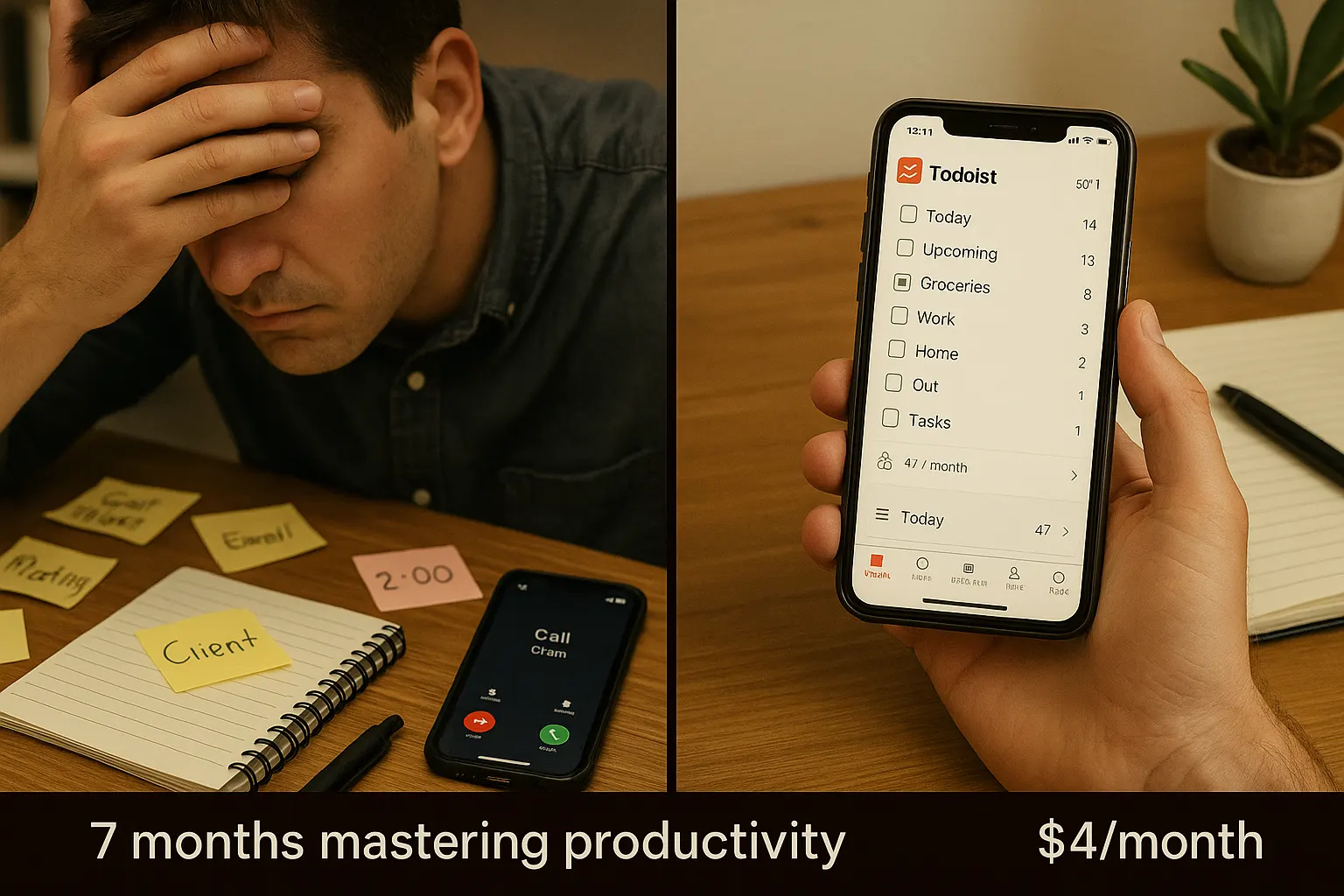
🎯 The Final Verdict After Solving My Crisis
Seven months after that missed client call disaster, my task management system actually works. Not perfectly – nothing ever is – but reliably enough that I sleep better knowing important stuff won’t slip through the cracks.
My honest rating: ⭐⭐⭐⭐☆ (4/5)
Bottom line: Todoist drove me crazy initially, but it solved the actual crisis I was facing. Search trends validate this choice – the growing adoption patterns suggest others are finding similar value. It’s not perfect – the learning curve is steeper than advertised, and you’ll probably need the paid version. But once you figure out your system, it just works across everything you use.
You should try this if: You’re tired of tasks falling through the cracks, you switch between multiple devices, and you’re willing to spend a few weeks building a proper system. Based on extensive market analysis, this profile matches their core user base perfectly.
Skip this if: You want something that works perfectly from day one, you’re already happy with a simpler solution, or you need heavy team collaboration features. Considering the competitive landscape, there are better options for those specific needs.
The free version gives you enough to test the core experience. Start there, use just the mobile app for a week, and see if the natural language input clicks for you. If it does, you might find yourself seven months later wondering how you managed the chaos before Todoist organized your life.
Crisis resolved. System built. Productivity restored.
Tested on iPhone 14 Pro, MacBook Air M2, and Windows 11 desktop. Used daily for 7 months managing personal tasks, work projects, and side hustle coordination.
For more tools in this space, I’ve been documenting my journey with productivity software – might save you some trial and error.
🔗 Stuff That Might Help You Too
- 📚 Official Todoist help docs (actually useful, surprisingly)
- 👥 Todoist Reddit community (where I found most of my solutions)
- 🎓 Productivity method guides (saved me hours of confusion)
- 🔄 Todoist alternatives comparison (in case this doesn’t work for you)
- 📊 Google Trends for Todoist (because things change fast)





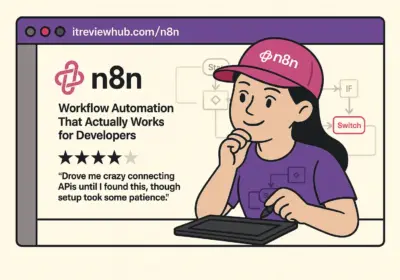
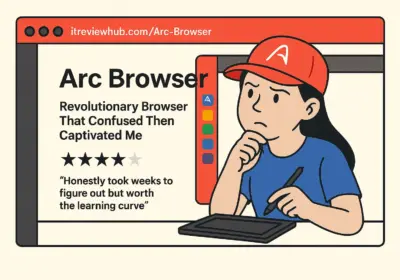
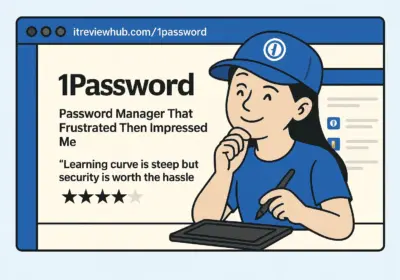
No Comment! Be the first one.